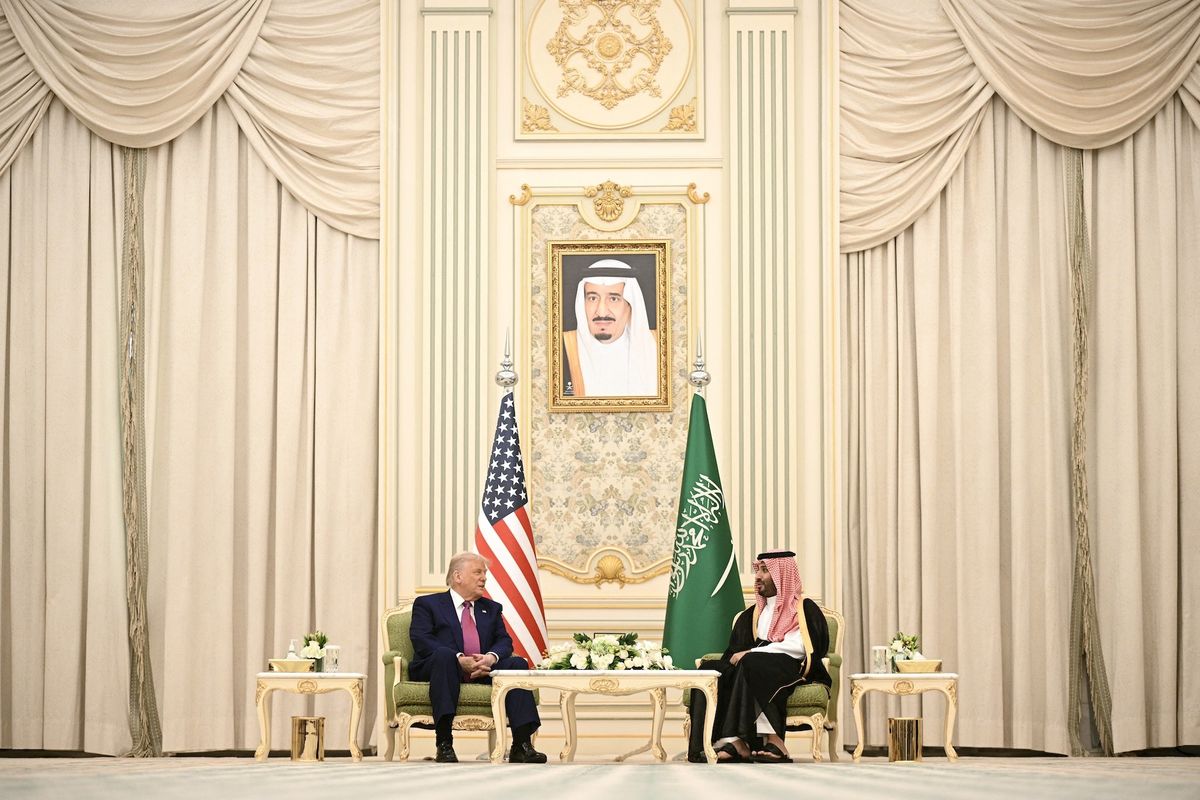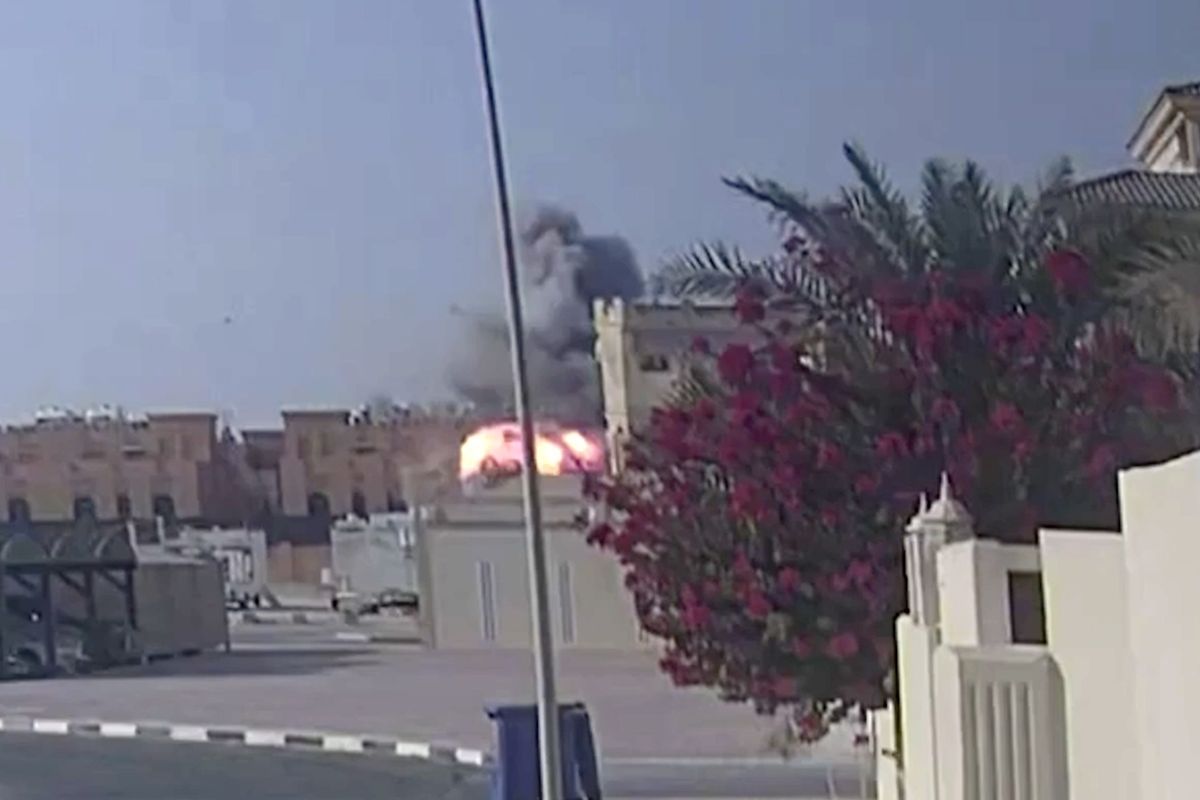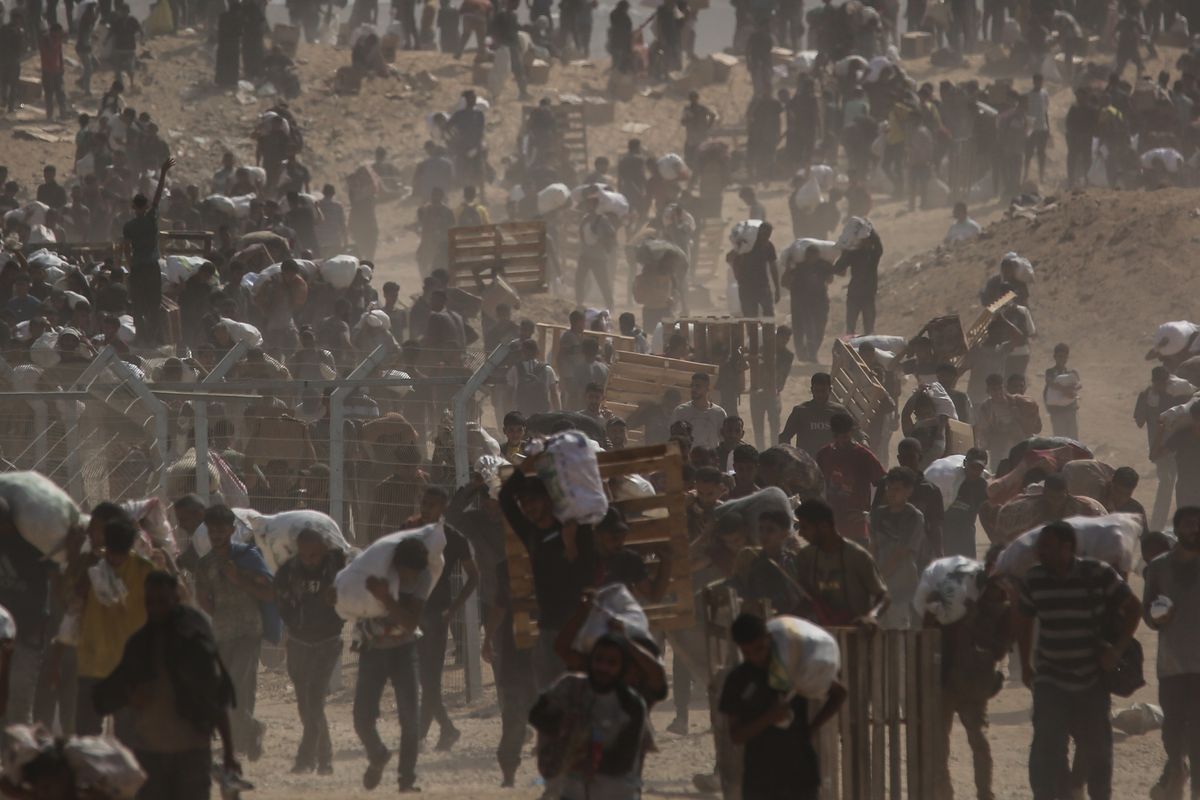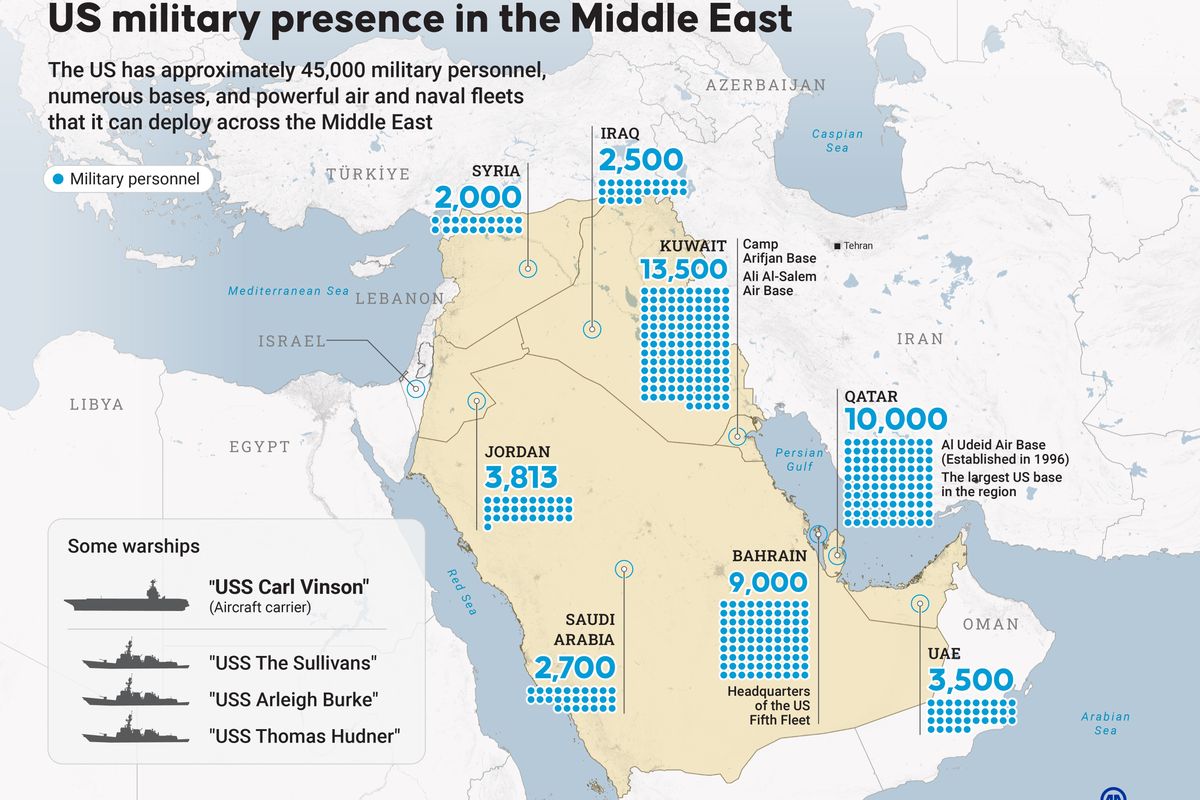U.S. special operations forces are widely considered to be some of the most highly trained and effective military units in the world and, as a result, they have played a critical role in America’s wars. Nowhere is that truer than in the Middle East and North Africa, where the U.S. military has been in prolonged engagements since 2001. U.S. military commitments in the region have gradually decreased since the George W. Bush Administration but President Barack Obama, and now President Donald Trump, have continued to rely heavily on special operations forces.
The Cipher Brief’s Fritz Lodge spoke with Retired Brigadier General Russell Howard, former Director of the Combating Terrorism Center at West Point, Senior Fellow at Joint Special Operations University and former Commander of the 1st Special Forces Group, about the role that special forces play in the MENA region.
The Cipher Brief: How has the role of special operations forces in the Middle East and North Africa region changed since the war on terror began?
Russell Howard: In the initial stages of Iraq and Afghanistan, special operations forces, particularly Special Forces with air support and the help of the CIA, were the folks that took down the Taliban and al Qaeda. The missions then morphed into direct action, and you could almost say that for the next eight years the emphasis was on direct action missions, even for traditional special forces.
For at least eight or nine years, roughly 80 percent of special operations forces were deployed in either Iraq or Afghanistan, which greatly diminished their effectiveness in other areas of the world. There are five regionally focused special forces groups. The 5th Special Forces Group had responsibility over the Middle East so they were quickly overcommitted. The 3rd Group then realigned from Africa and went almost exclusively to Afghanistan and Pakistan. Then all the other groups, including the 7th Group, which covers Central and South America, the 10th Group which is aligned with Europe, and the 1st Group, which is aligned with Asia, and which I previously commanded, did their turn in the box. They all did rotations into Afghanistan or Iraq, with pretty good success.
However, the other regions of the world that depended on the foreign internal defense (FID) missions, which the special forces are best at, were really neglected for a number of years. What’s changed now is that the requirements in Afghanistan and Iraq have decreased. Now, the other regions of the world are starting to get some of these Special Forces back, which is good. But there is a learning curve. Special Forces have been out of this FID mindset for a while so it takes some time to readjust.
You also have to add Syria to this menu of opportunities. I consider Syria to be more of an unconventional warfare mission in that we are using special forces to assist insurgent groups and, in part, undermine the regime of Syrian President Bashar al Assad. The Kurds in Syria are also our allies and we have Special Forces guys working with the Kurds to combat ISIS with great effect, but Turkey is fundamentally opposed to the Syrian Kurdish groups that our forces are working with, so U.S. special operations forces in Syria have a very complicated mission.
The good news in my mind is that Special Forces are getting back to their more traditional role, which is foreign internal defense, and even unconventional warfare.
TCB: Can you talk a bit more about the differences between these roles – direct action, foreign internal defense, unconventional warfare – and the different skills that you need for these missions? What does the readjustment learning curve look like?
RH: Direct action refers to raids, takedowns, hostage rescue, etc. Missions like the bin Laden raid, for instance.
Foreign internal defense is about training other militaries – often their special operations forces – to do what they need to do so we don’t have to do it for them. This is our traditional role.
Unconventional warfare is supporting insurgents to topple a regime. Syria would be an example of unconventional warfare, although it is complicated by focusing on ISIS at the same time.
The convenient way to look at this is that when you’re doing foreign internal defense, you are supporting the government against insurgents. When you’re doing unconventional warfare, you’re working with insurgents to topple the government. What we like to say is that when you’re doing foreign internal defense missions you stay at the Marriott. When you’re doing unconventional warfare missions you’re staying in triple canopy or in the desert.
Counterinsurgency is probably a more direct role than foreign internal defense. In FID, you’re training militaries to deal with insurgents. In counterinsurgency missions, you’re actually helping a friendly state deal with an insurgency problem.
Counterterrorism is a mix. You can do direct action, like in the bin Laden Raid, you can do foreign internal defense like we do in Africa, where we train foreign militaries to deal with terrorist problems. It’s a bit of a grab bag.
Those are the five traditional missions of Special Forces.
TCB: Is this one of the biggest challenges of operating in the Middle East and North Africa region, that many of these traditional special forces roles are often thrown together as one in the region’s more complex conflicts?
RH: Yes, it is more complicated.
Back in my day it was pretty easy. When I commanded the 1st Special Forces Group it was all FID all the time. Now, these guys operating in Syria and, to a certain degree, Iraq could be doing unconventional warfare, counterterrorism, FID, or counterinsurgency all maybe in the same day. You could even be doing direct action too, although I don’t think there is too much direct action happening in either conflict at the moment.
So yes, the landscape is much, much more complicated. The good news is that these guys are flexible and capable and can do it all. The problem is that there are different skill sets and you have to train to them. So just going from one to the other is difficult. I imagine it’s a huge training challenge.
TCB: Do you have a sense of the size of the special operations forces in the region and do you see a trend upward or downward?
RH: I don’t know what the numbers are specifically. I know for a fact that nearly 80 percent of the force was deployed in the MENA region and Afghanistan back at the height of those wars, but it’s not nearly that number today.
The other groups outside MENA are also going back to their more traditional missions in all areas of operation. The 10th Group, for instance, had to cover all of Europe and all of Africa during the height of the Afghan war because the 3rd Group was diverted to Afghanistan. But now the 3rd Group is back in action in Africa so we are getting back to more traditional alignments where these forces can use their language skills and cultural awareness to do what they do best. That is happening now.
TCB: When you look at the way that special operations forces operate in more stable Middle Eastern allies like Saudi Arabia, Egypt or Jordan, what is the focus there?
RH: That would be more focused on foreign internal defense or counterterrorism missions. I know we are particularly active in Jordan, which is a strong ally with whom we do a lot of training. Also in the United Arab Emirates, which has really stood up as a counterterror force of choice in the Middle East.
All of these are more focused on the foreign internal defense missions, not direct action. Helping those countries develop the capabilities so they can do it themselves.
TCB: At this point, what do you see as the most positive changes to the SOF mission in MENA and what do you think needs to be improved or what might be causing strain?
RH: The good news is that the training base for Special Forces is just magical. I’m telling you, I’m not sure that I could compete anymore. These guys truly are amazing warriors but they’re more than that. They’re smart, flexible, adaptable, and unafraid. I think that they’re the best-trained forces in the world.
The other good news is that they are keeping up with technology. The technology that they are working with now is remarkable, particularly in communications. Satellite communications, range-finding, all the ability to support aircraft, it’s amazing.
The bad news, of course, is that the guys are still deployed all the time. When I commanded the 1st Group, the average deployment was 175 days a year. I know of Special Forces soldiers who have had more than six combat deployments during height of the Iraq and Afghanistan wars. That is punishing. It’s hard on families, it’s hard on the guys. The deployment rate and the length of the time away from station and away from home is a challenge for command and a huge challenge for families.
But it’s not going to stop. Special operations forces are the force of choice for just about everything now, not just special missions. This is because they are so effective and they do so well. But I think that we are deploying them to do things that they don’t necessarily have to do. Things that other forces might do better. Fortunately, others are stepping up, particularly the Marine Corps. They are taking on some of these foreign internal defense missions, but I still worry that we are overcommitting the special operations forces.
TCB: Do you worry that because the idea of “boots on the ground” is so politically toxic, U.S. administrations will continue to rely heavily on SOF for these kinds of missions?
RH: That certainly would be the case for the last administration. Boots on the ground was toxic but they knew that they could send SOF and sidestep much of the debate that comes with putting boots on the ground in a conflict.
I haven’t quite figured out the current Administration, I don’t think anybody has. However, I think that the Trump Administration is less encumbered by the notion that putting boots on the ground is toxic. There are other alternatives like the “Mother of All Bombs” or firing 59 Tomahawk missiles but the problem is that, at the end of the day, you can’t do everything from the air. Somebody’s got to go in.
Still, I am encouraged that this Administration will look at more operations and not be so reliant on special operations forces.
TCB: How would you advise President Donald Trump to utilize SOF?
RH: I would tell him that these guys are a national treasure. In my day it cost an average of $1 million to train a Special Forces soldier, now it probably costs closer to $1.5 million, and you don’t waste that asset. You use them judiciously when you really need them.
The big question is what’s going to happen with North Korea? That’s the big question for SOF. If you’re going to secure nuclear devices, who’s going to do it? If you’re going to take down the most heavily guarded installations in North Korea, who’s going to do it? It will be special operations forces.
If I were the commander of all special operations forces, that would be what keeps me up at night.












